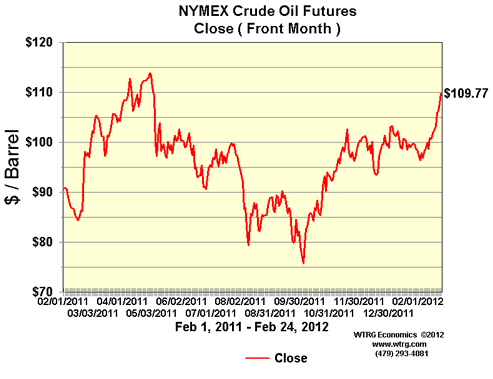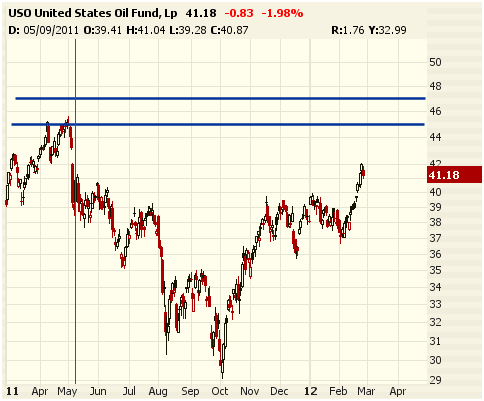We’re all aware of the latest spike in oil prices. Will the surge continue? Could we see $125 in the near future?

Geopolitical tensions in Libya, Syria, Sudan, Yemen and Iran have led to a genuine supply shock. But rather than reiterate what most media outlets are attributing to the spike, I prefer to present an actionable way to attack the current parabolic rise in crude by introducing a strategy that you will find extremely useful in all of your future investment endeavors.
Let me introduce you to one of my favorite investment strategies. It’s one I use in my Options Advantage newsletter service – vertical spreads, more specifically bear call and bull put spreads.
You see, I prefer to sell vertical spreads, otherwise known as credit spreads.
By selling vertical spreads I can create a directional strategy on my assumptions – in this case where I think oil prices are headed over the next 30 to 50 days – with limited risk and limited reward.
But more importantly, my assumptions do not have to be perfect or even right.
That’s because vertical spreads, while directional, allow for a margin of error.
Let me explain.
Let’s say we are bearish on oil, so we want to sell a few bear call spreads on the United States Oil Fund (NYSE: USO). USO is one of the most liquid oil-based ETFs as seen by the tight bid-ask spreads in the options chain below. An ETF or stock with highly liquid options is a necessity if you want to trade options effectively over the long term.
The first thing we want to do is choose our probability of success by looking at the options chain for USO. With USO trading at $41.18, I prefer to find something several strikes out of the money with a probability of success around 80%.
By looking at the delta or "probability of expiring" in the money for USO, we can simultaneously sell the April 45 strike for $0.70 for a probability of success of roughly 80% (the likelihood that the 45 call will expire worthless) and buy the April 47 strike for $0.46. This would bring in a net credit of $0.24.

Let’s see what this looks like on the chart. Basically, USO could move 9.3% higher, stay the same, or move lower and the trade would make 13.6% (return is calculated based on the credit of $0.24 divided by the required margin of $1.76). Not a bad trade, considering the probability of success on the trade is roughly 80%.

Inherently, credit spreads mean time decay is your friend. Most options traders lose value as the underlying index moves closer to expiration. This is not the case with the credit spread strategy, however. As the underlying ETF moves closer to expiration and remains below the short (sold) strike (45) of the spread, the strategy makes money.
Remember, feel free to email me at optionsadvantage@wyattresearch.com with any questions that you might have regarding anything options. I am more than happy to help you learn what I feel is one of the most powerful options strategies available to self-directed investors.
Kindest,
Andy Crowder
Editor and Chief Options Strategist
Options Advantage and The Strike Price
 Facebook
Facebook
 Twitter
Twitter